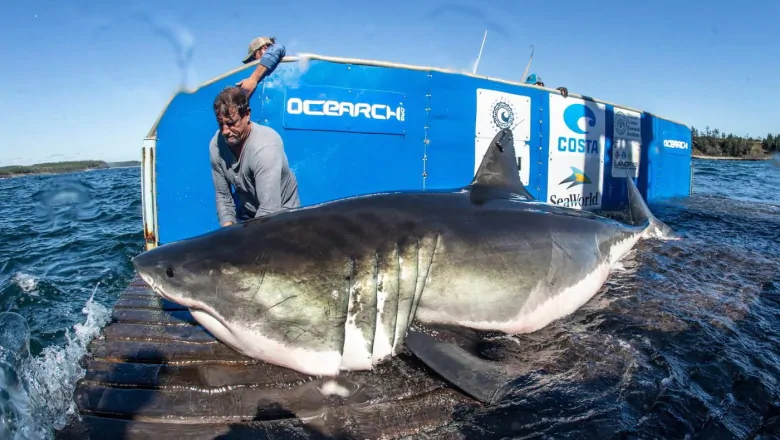A newly published paper in the Canadian Journal of Fisheries and Aquatic Sciences speculates on why more great white sharks are being seen in Atlantic Canada in the summer months, especially off Nova Scotia.

Climate change, a supply of seals to eat and effective conservation in the United States are all possible explanations for the apparent increase in great white sharks in Atlantic Canada, according to a newly published paper in the Canadian Journal of Fisheries and Aquatic Sciences.
The peer-reviewed report, led by authors from the University of Windsor in Ontario, speculates on why more of the apex (top-of-the-food-chain) predators are being seen in the summer months, especially off Nova Scotia.
One hypothesis is that the great white shark’s range has shifted, bringing them into an area where they were rarely seen in the past.
“A northward range expansion could be related to multiple factors, including warming Canadian waters due to climate change, population recovery and/or increased regional prey abundance,” the authors state.
Or maybe they’ve been here all along and we didn’t notice.

“A large, highly mobile, predatory shark may have been historically abundant in Canadian waters yet considered ‘rare’ simply due to our inability to observe them,” the paper states.
It documents records of 60 great white shark “observations” in Atlantic Canada between 1872 and 2016: There were 27 sightings; 26 caught in nets; and seven others inferred from teeth in gear and wounds on seals and porpoises.
What the tagging shows
The report is based primarily on satellite tracking data from Florida-based Ocearch,

